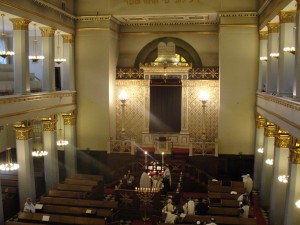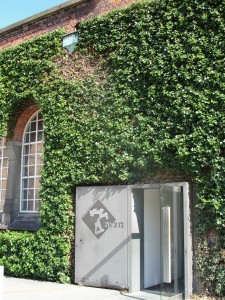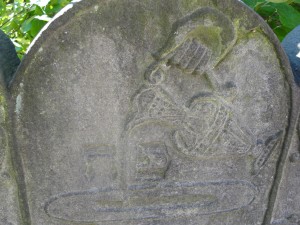
Copenhagen, Denmark–Perhaps you’ve heard the story of how Denmark proudly stood by its Jewish citizens during WWII, helping more than 7500 escape by boat to Sweden. In a country filled with churches and whose kings are always named Christian or Frederick, it may seem hard to imagine much of Jewish life.

And yet there is a vibrant Jewish community here, with an active central synagogue just a few steps from the Round Tower, as well as a Reform and Chabad shul. To learn more about historical Danish Jewish life, check out the Danish Jewish Museum, tucked in a corner of the Royal Library in what was formerly Christian IV’s boat house. The modern, soaring design by Daniel Libeskind brings lights and spaciousness to a small footprint. An introductory film offers a timeline of Jewish inhabitants of the country.
You’ll also learn about how the Danes secreted away their Jewish neighbors across the sea.
Visiting the synagogue is a little trickier. Morning daily services begin at 6 a.m., Saturday mornings at 9 a.m.. Since there aren’t any building tours, this will be the only way you can check out the beautiful oriental-style building. It’s an Orthodox congregation, so women should head up to the balcony and men worship on the main floor.
The 400-year-old Jewish cemetery on Møllegade 12, 2200 Nørrebro is not open daily, but well worth a visit. (Call the Jewish Community Center office for opening times at (+45) 33 12 88 68.) It shows the changes of memorials over the years, as tombstone engravings progress from Hebrew to Danish. Some of the older stones have birds and hands warding off the evil eye. The history of this cemetery is quite remarkable. During WWII, the cemetery caretaker allowed people to walk off with headstones. A Jewish boy working with a landscaper noticed Hebrew lettering on a resident’s garden path, which turned out to be one of the headstones. More were recovered and restored, and the cemetery only recently opened to the public. A guide told us that locals use cemeteries as places to lounge, picnic, even sunbathe topless, and the Jewish community did not want this cemetery used in that traditional Danish way, which is why it was closed. Visiting is limited, and men must wear a headcovering (and presumably women must keep their tops on, too). 